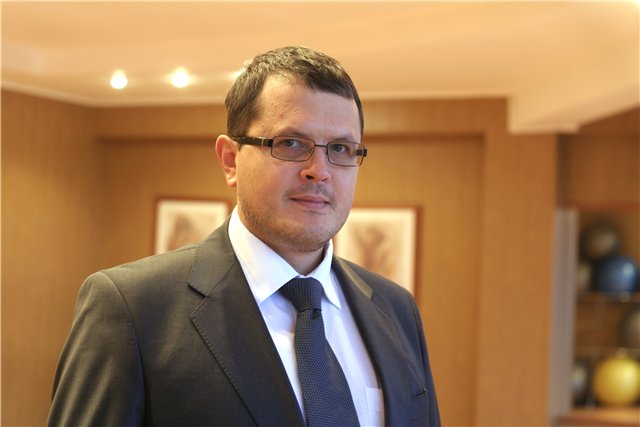
Encouraged by Initial Russian Moves in Ukraine, Transnistria Now Fears for Its Future
Publication: Eurasia Daily Monitor Volume: 12 Issue: 11
By:

No one was more encouraged by Russia’s annexation of Crimea and military moves in Donbas (eastern Ukrainian region encompassing the Donetsk and Luhansk provinces) than the leaders of Transnistria. This breakaway Slavic-dominated region in northeastern Moldova viewed Moscow’s actions as opening the way to the establishment of a land bridge between itself and the Russian “continent.” But now that Russia’s invasion of Ukraine has stalled and Ukrainian and Moldovan positions have hardened, no one is more discouraged about the future than the leadership in Tiraspol. Some of them are now even talking about their breakaway region being “in deep crisis” and “in fact, on the edge of death.”
One of their number, Dmitry Soin, a deputy in the Supreme Soviet of the self-proclaimed but unrecognized “republic,” suggests that unless Moscow comes to its rescue, the “pro-Russian enclave, which over the course of 24 years has demonstrated its loyalty to Moscow,” will enter a crisis from which it may not emerge. This crisis, he says, was produced by the coordinated efforts of Ukraine and Moldova to blockade the “republic.” Standing behind Kyiv and Chisinau, Soin argues, has been the European Union and the United States, which are “objectively interested in the liquidation of the pro-Russia enclave so that Moscow will not be able to use it to pressure the southwestern portion of Ukraine and so that Moldova will have opened to it the path to EU membership (Regnum.ru, January 11).
In words dripping with bitterness, Soin says that the issue of Transnistria and its future is “not simply” about what will happen to that “republic” but also about the future status of the Limited Contingent of the Group of Russian Forces and Peacekeepers of the Russian Federation located there. The West is unanimous in its commitment to the idea that “Russia must retreat from the banks of the Dniestr.” Is Russia going to go along? Or is it, in this dire moment, going to come to Transnistria’s rescue.
The situation of Transnistria, Soin continues, has deteriorated sharply over the last ten months since Ukraine issued a travel ban on Russian male citizens aged 16 to 65, lest they join anti-Kyiv fighters there. At the same time, the Moldovan government exacerbated the situation by putting obstacles in the way of Transnistrian residents who wanted to travel to Russia. Some of those who were blocked, he says, have been deported to Russia against their will. This policy has had the effect of decapitating the leadership of the unrecognized “republic,” while keeping others in Transnistria from travelling at all. According to the Transnistrian parliamentarian, “these people have been deprived of their right to live in their own homes,” a violation of their human rights. The breakaway region has lost many of its best leaders and can easily lose more whenever Chisinau decides, Soin asserts.
The economy of Transnistria is in a tailspin, which further adds to the “republic’s” problems, he says. On the one hand, the separatist region exists within a virtual economic blockade; and on the other, this year, the agreement allowing Transnistria to trade with the EU independently of Moldova runs out—a reality that Chisinau can use to further tighten the screws on Tiraspol. For now, at least, Transnistria has little or no ability to join the Moscow-led Eurasian Economic Union (EEU) given Kyiv’s stance.
Moreover, the population of the “republic” is declining at an increasing speed. Over the last 24 years, it has fallen officially from 750,000 to 500,000, and unofficially to 300,000, a figure which Soin says is “objective.” As a result of all these factors, Soin continues, “for the first time in its 24 years of independence [sic], the Transdniestr Republic is on the brink of death.”
The Tiraspol government has compounded these problems by some mistaken decisions, the parliamentarian says, but it cannot do the right thing or overcome outside pressures from Moldova, Ukraine, the EU and the United States unless it receives help from the Russian Federation. And the “republic’s” prospects will become even worse if its four geopolitical opponents act and Russia does not.
In this situation, Soin argues, Moscow must face up to several unpleasant realities. First, if Transnistria disappears and Moldova reabsorbs it, there will be a quarter of a million Russian citizens and approximately the same number of Russian compatriots who will become second-class citizens in Moldova and who will likely seek refuge in the Russian Federation. Second, Russia will lose control over much of the property Russians own in Transnistria, ownership that is defended by Tiraspol’s laws but will not be protected by Moldovan ones. And third, Moscow will have to deal with the consequences of a geopolitical defeat that will extend far beyond Transnistria and hurt Russia’s standing as “a superpower.”
As a superpower, Soin says, Russia is “obligated to ensure both the security of its citizens and compatriots [as well as] its military and economic objects, wherever they are located—including, of course, in Transnistria.” The question today is whether Moscow can and will meet that obligation, or whether Transnistria will cease to exist.




